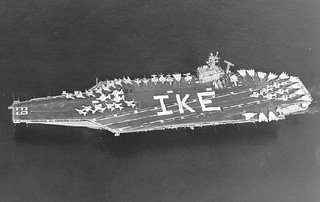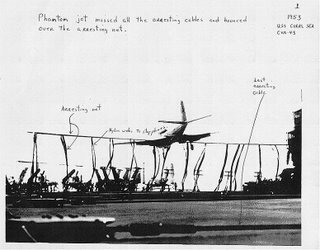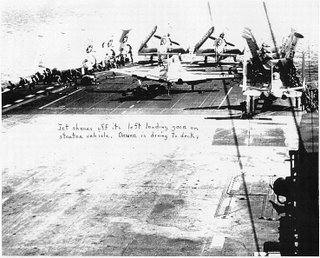Chronicles of Naval Aviation: The Angled Flight Deck

Occasionally questions arise from those unfamiliar with Naval Aviation and, just as occasionally, we shall endeavor to address them here. One item that, certainly today, seems to be self-evident is the need for an angled deck for carrier operations. Like many other features of modern day CV/CVNs (e.g., armored flight deck), the angled flight deck was first employed by the Royal Navy. It wasn’t until the advent of the Forrestal-class super carriers that we began incorporating angle decks in the original design (Essex– and Midway-classes were retrofitted). More than any other implementation, this feature contributed to a significant decline in the aviation mishap rate for naval Aviation. For any doubters of the efficacy of such a design feature, the following sequence of photos is provided (h/t: USS Coral Sea net).
(From the 1953 Med Cruise):
Narrative: Here is a series of five photographs that show an F2
Banshee’s landing gone bad. The first picture says it’s a Phantom but I believe
from the tailcode and the look of the plane that it is an F2H-3 Banshee from
VC-4 Det 6. (The author is correct, it is an F2H-3 Banshee – SJS)Photo’s courtesy of the Ellis collection. Obituary of Pilot Ltjg.
Robert E. Berger. Submitted by his nephew Bob Loving.
Today that same case would see the aircraft continue down the angle deck, get airborne again and re-enter the pattern for another attempt (though on occasion with much unintended color)…
– SJS






